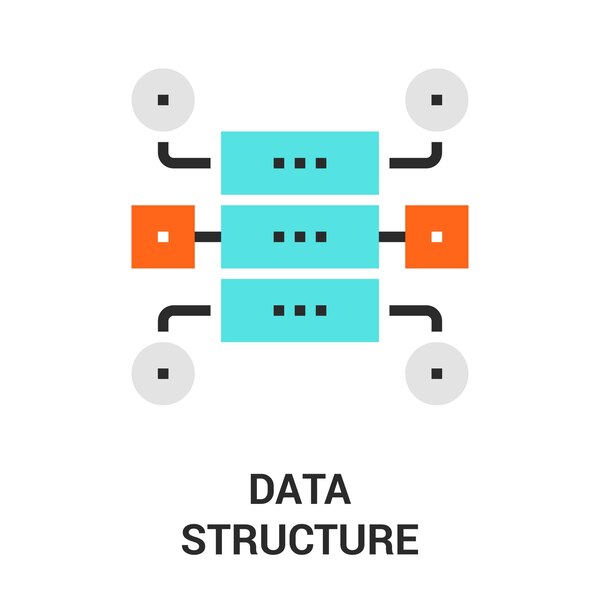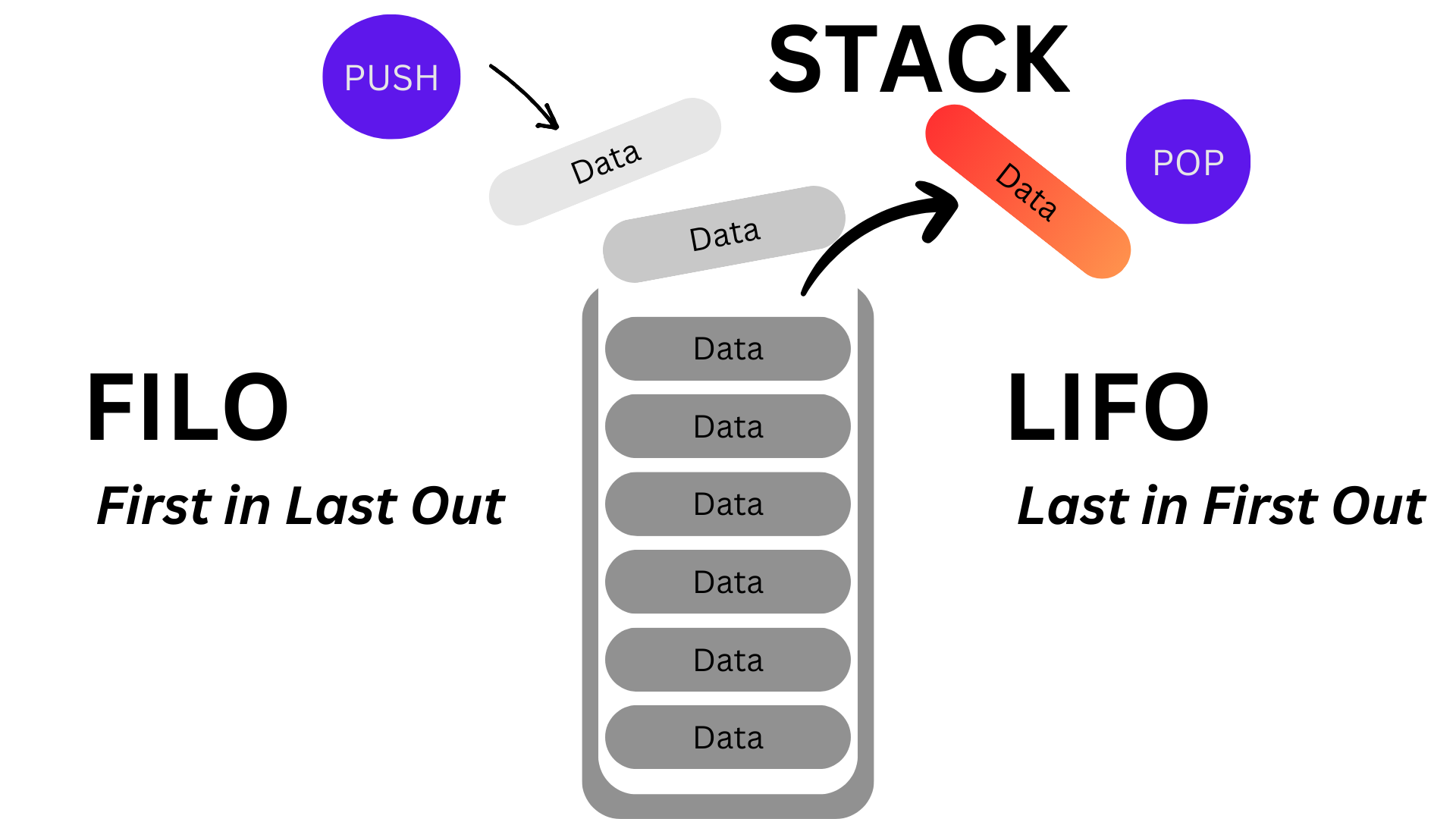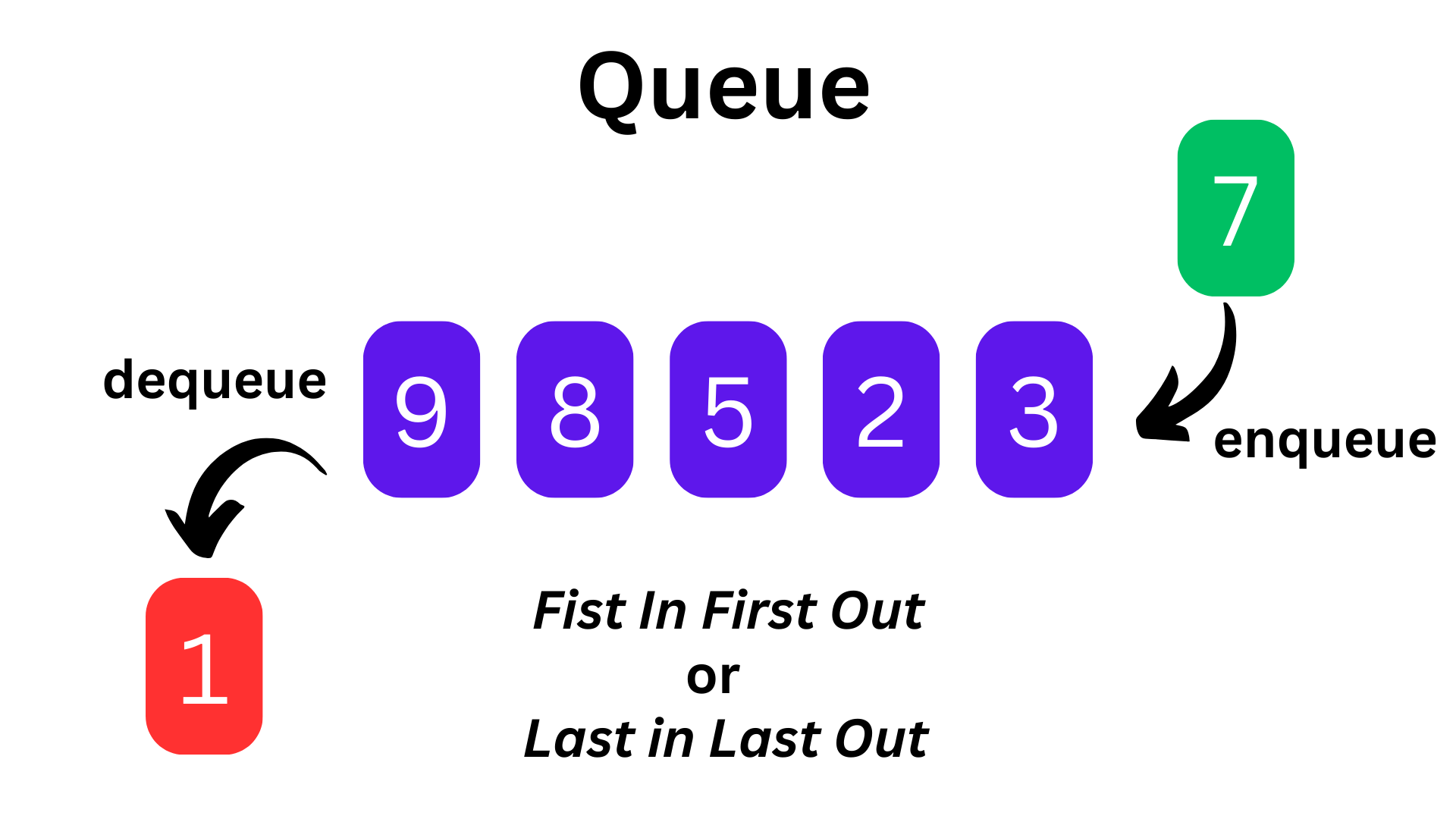Stack & Queues in Data Structure
 Romjan D. Hossain
Romjan D. Hossain
In previous weeks, I discussed Arrays and Linked Lists. Today, I'll dive into two more fundamental data structures: Stacks and Queues.
What is a Stack?

A Stack is a linear data structure that follows a specific order of operations known as FILO (First In Last Out) or LIFO (Last In First Out). This means the most recently added item is the first one to be removed. Common operations performed on a stack include:
push: Add an element to the top of the stack
pop: Remove the last element added (the top element)
peek: View the top element without removing it
Stacks can be easily implemented in Python using the built-in list data structure. The append() method adds elements to the list (push), and pop() removes the last element (pop), both operating in O(1) time.
Here’s an example of a basic stack implementation in Python:
class Stack:
def __init__(self):
self.values = []
def pop(self) -> None:
if len(self.values) != 0:
self.values.pop()
else:
raise IndexError("Pop from an empty stack")
def push(self, value) -> None:
self.values.append(value)
def peek(self):
if len(self.values) != 0:
return self.values[-1]
else:
raise IndexError("Peek from an empty stack")
What is a Queue?

A Queue is another linear data structure that maintains the order of elements in a FIFO (First In First Out) or LILO (Last In Last Out) fashion. Elements are added at the rear (enqueue) and removed from the front (dequeue). Queues are particularly useful in scenarios like:
Handling print jobs
Managing web server requests
Task scheduling in operating systems
Unlike Stacks, Python’s built-in list is not the most efficient choice for implementing queues, as removing elements from the front of a list takes O(n) time. Instead, Queues can be efficiently implemented using Singly Linked Lists or Doubly Linked Lists.
Here’s an example of a Queue implementation using a Singly Linked List in Python:
class Node:
def __init__(self, val=0, next=None) -> None:
self.val = val
self.next: None | Node = next
class Queue:
def __init__(self) -> None:
self.head = None
self.tail = None
def enqueue(self, value) -> None:
new_node = Node(value)
if self.tail:
self.tail.next = new_node
self.tail = new_node
if not self.head:
self.head = new_node
def dequeue(self) -> None:
if self.head:
self.head = self.head.next
if not self.head:
self.tail = None
else:
raise IndexError("Queue is empty")
def peek(self):
if self.head:
return self.head.val
else:
raise IndexError("Queue is empty")
def print_all(self) -> None:
curr = self.head
while curr:
print(curr.val, end=" -> ")
curr = curr.next
print("None")
This implementation efficiently adds and removes elements in O(1) time, avoiding the inefficiencies of list-based queue implementations.
Conclusion
Stacks are ideal for scenarios where you need Last In First Out behavior, such as in function call management or browser history.
Queues are suited for First In First Out operations, making them useful for managing tasks in sequential order, like processing server requests.
Both data structures are key to efficient problem-solving in various applications, and knowing how to implement them optimally ensures better performance and resource management.
Subscribe to my newsletter
Read articles from Romjan D. Hossain directly inside your inbox. Subscribe to the newsletter, and don't miss out.
Written by

Romjan D. Hossain
Romjan D. Hossain
Exploring new/old technologies every day. Its just amazing.....!